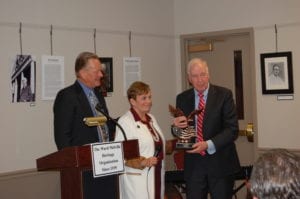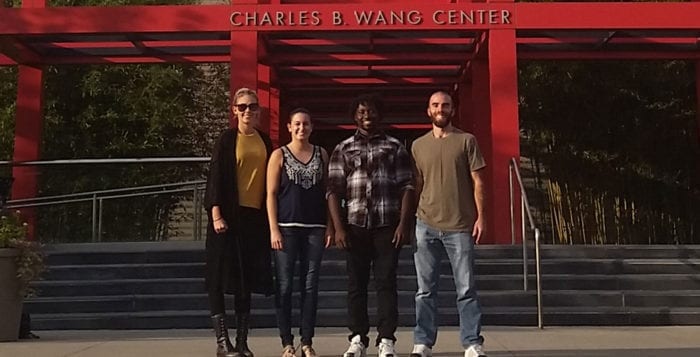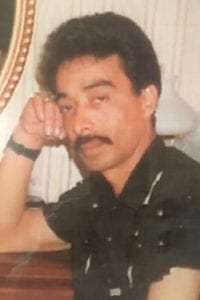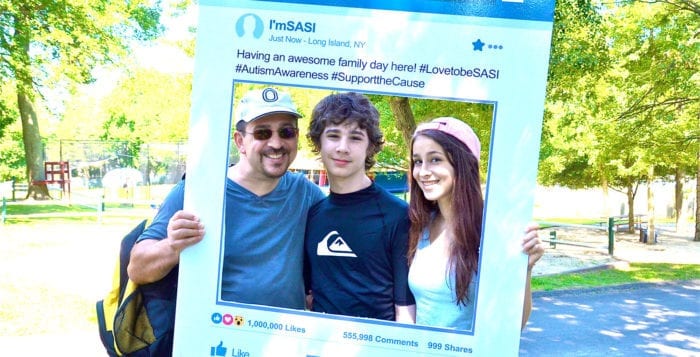By Heidi Sutton

Last Thursday evening was a night to remember, literally, as The Ward Melville Heritage Organization in Stony Brook hosted a fundraising dinner at its Cultural & Educational Center to introduce a new program for Alzheimer’s and dementia patients on Long Island and their caregivers, aptly titled Young at Heart. The dinner, which was catered by The Three Village Inn, attracted many health care professionals in the community who were eager to learn more about this exciting new initiative. Live music was provided by Rich Iacaona on piano, Keenan Zach on bass and Tom Manuel on trumpet.
The 26-week-long series, set to begin in November, is a collaborative effort between The WMHO, Stony Brook Medicine, the Long Island State Veterans Home and The Jazz Loft along with sponsors The Bristal Assisted Living and Aging Flower. The memory care enrichment program will feature music and memory, art, poetry and comedy. Programs will be held alternatively at The Jazz Loft and the Cultural & Educational Center. A facilitator who specializes in geriatrics and a certified nurse will be present at each program.
Senator Kemp Hannon, chair of the Senate Health Committee, regarded nationally as an expert in the health care industry, helped kicked off the program and was honored for spearheading both the reauthorization of the Health Care Reform Act and the development of New York’s Assisted Living Program.
“In our society there are causes that are popular and attract a great deal of support. [However] there are critical issues that are overlooked,” said Gloria Rocchio, president of The WMHO. “One of them is the reason we are here tonight — a disease affecting people of all ages — dementia and Alzheimer’s — which is not getting the support it should with the exception of Senator Kemp Hannon whose [Care Act] legislation brings positive steps in the right direction.”

“You are doing something very special tonight,” said Hannon. “You’re focusing on a need and you’re doing it as a community. You’re forming a consciousness that I have not heard ever before for this big, big topic.” The senator received a recognition award from The WMHO for his compassionate leadership.
Tom Manuel, founder and president of The Jazz Loft, said the initial vision for The Jazz Loft always included programs for individuals with dementia and Alzheimer’s and children with special needs. “I have seen firsthand how magical [music therapy can be].” Laura Landor Stiegelmaier, director of Education and Community Outreach at The Jazz Loft agreed, adding, “This is so important to us. We truly believe that we are setting an example for our community and our community at large for all that we can do for those who are suffering with dementia and Alzheimer’s.”
Barbara Heaphy, recreation director at The Bristal Assisted Living in East Northport summed it up perfectly, saying “There’s such a need for this multifaceted program and the enrichment that it will offer people all over Long Island.”
The Young At Heart committee will host a community forum to discuss memory loss at The Ward Melville Heritage Organization, 97P Main St., Stony Brook on Oct. 13 from 6:30 to 8 p.m. Facilitated by Dr. Stephen G. Post of Stony Brook Medicine, the public is invited to participate in a round table discussion with medical professionals discussing solutions and caregivers talking about peaks and valleys of their experiences. Learn about the Young at Heart series and its upcoming events. Guest speakers will include Stony Brook Medicine’s Dr. Lisa Strano-Paul and Dr. Lory E. Bright-Long, Dan Cohen, founding executive director of Music & Memory Inc. and caregivers Don Estes and Karin Wile. Refreshments will be served. For more information on this free event or to RSVP, call 631-689-5888.
For more information about the Young at Heart program, please call 631-751-2244.



































